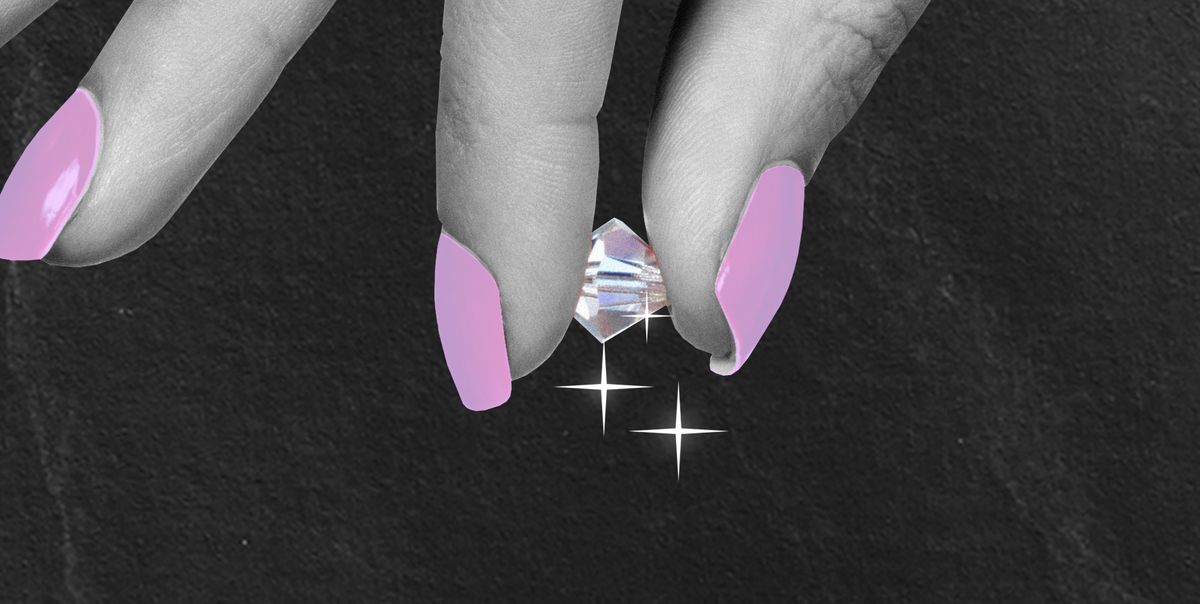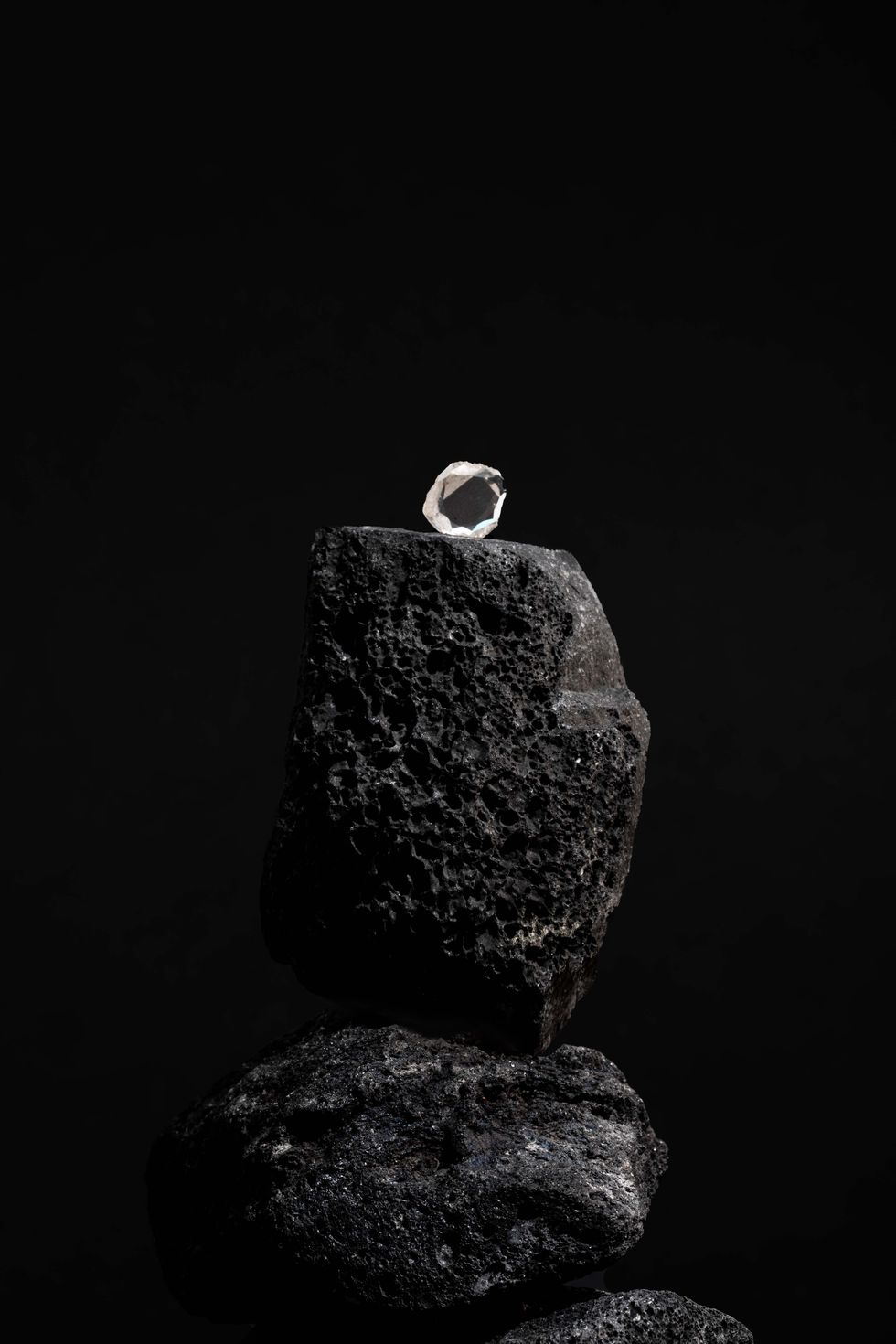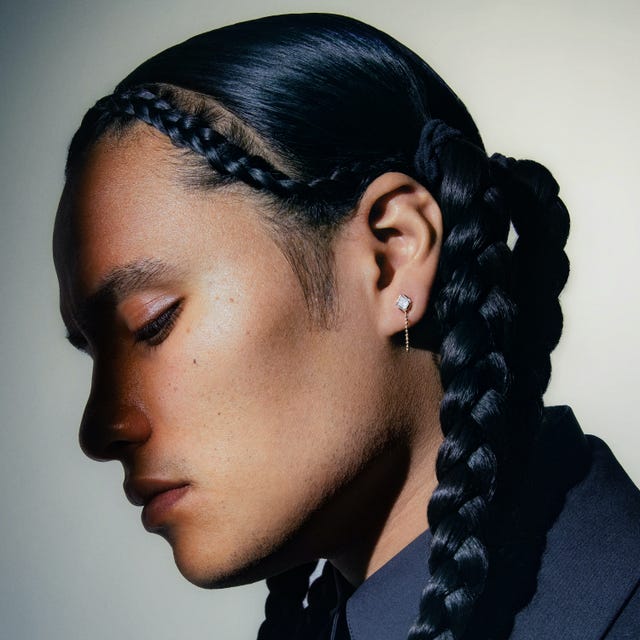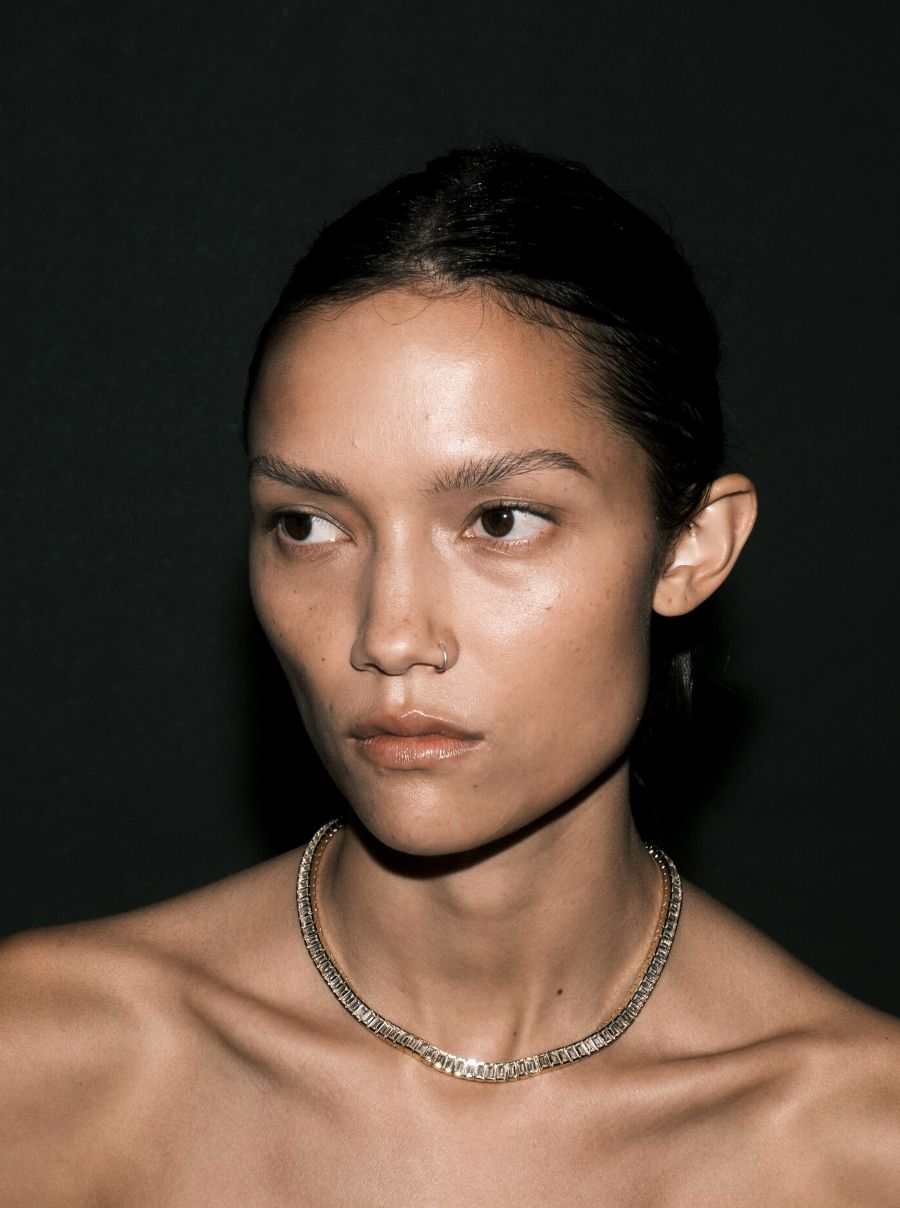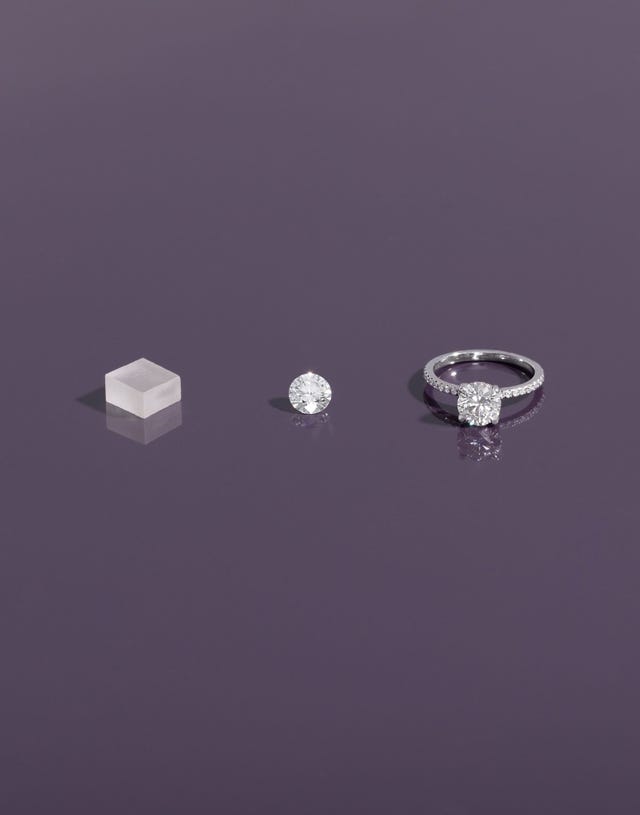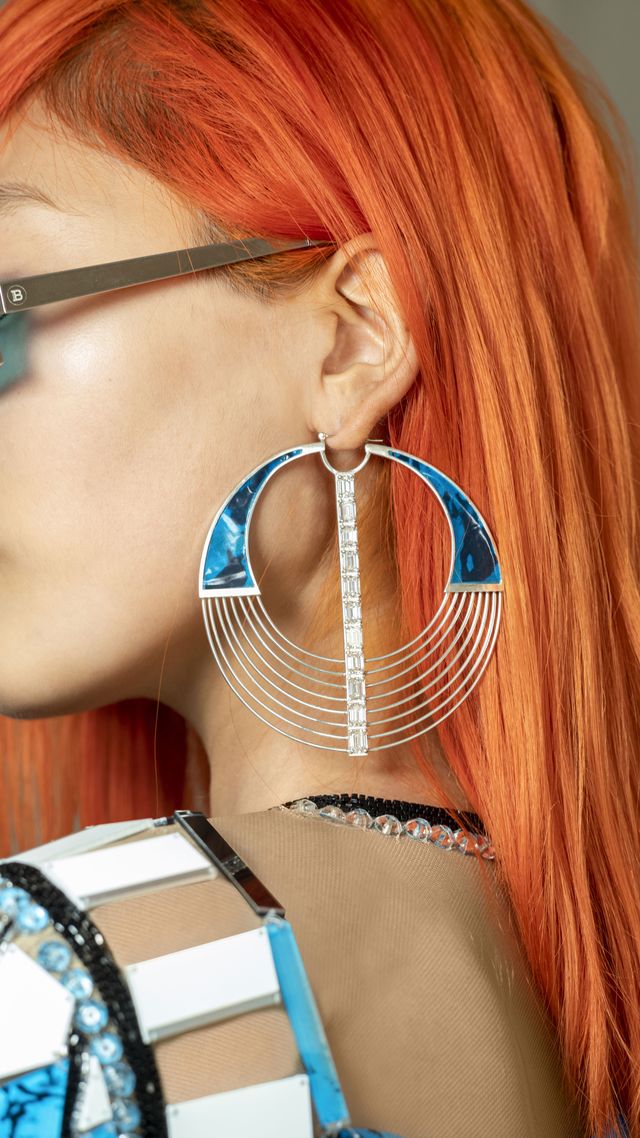It’s a humid summer morning in New York, and Mona Akhavi, CEO of Vrai, the lab-grown jewelry line backed by Leonardo DiCaprio and other high-profile investors, is recounting the company’s recent orders via Zoom. “It’s insane,” she says, matter-of-factly. “We’re getting orders for 10-carat diamonds once a week. We just had a 10-carat gradient diamond order and a three-carat heart-shaped diamond—we also had a 10-carat emerald cut diamond.”
In June 2023, Vrai launched its “Cut for You” program, which allows anyone to buy a diamond, grown just for them, to whatever specifications their heart desires. That means choosing from 30 different shapes—hexagon, lozenge, trillion!—along the more traditional options like round brilliant, as well as the cut. No more hours spent searching for your dream diamond; customers can then customize their jewelry piece—be it an engagement ring, wedding band, or anything else. The process takes nothing more than a few clicks, and you don’t have to go through any exclusive showroom, aggressive brokers, or showy salespeople (unless you want to, that is—Vrai also has a pop-up in New York City this summer). It’s also a zero-emission process. Once ordered, artisans cut and polish your custom piece.“We are very shocked and surprised how consumers have received it because it’s almost like they’re feeling empowered and free,” Akhavi adds. To date, the largest custom-grown diamond Vrai has created for a customer was a 12-carat diamond in an emerald shape, but Vrai is also currently stocking loose diamonds on its website that are above 13 and 14 carats, clocking in at over $30,000 in some cases.
The idea of allowing anyone to grow their own diamond was born out of the countless requests Vrai was receiving from customers wanting specific shapes and even more specific carat sizes. “We are vertically integrated where we have our own cutters and polishes and we grow our own diamonds,” Akhavi says. “So it was almost like opening the door to the workshop to customers and giving them exactly what they wanted. I think that’s powerful.”
To be clear, lab diamonds have rather unceremoniously been cast as more accessible versions of natural diamonds, despite the fact that they are made up of the same chemical composition as natural diamonds (they are literally identical, physically and optically). That’s because of the affordability factor. In fact, the only way to tell the difference is through “sophisticated devices developed by GIA and other organizations,” according to the Gemological Institute of America (GIA). “Based on the fact that lab-created diamonds are so much cheaper than natural, the average budget typically spent allows for a much larger diamond,” says Jeremy Auslander, founder of the diamond, jewelry, and watch brokerage firm Roxbury Jewelry in Los Angeles, which deals in both lab and natural diamonds. “The average carat weight of a lab-created diamond engagement ring is significantly larger than a natural diamond engagement ring.” Adds Akhavi: “Diamonds can exchange hands up to 15 times from excavation to the cutter to the distributor to the polisher to the trader to the dealer. That’s why we say we’re not diamond dealers, we’re diamond creators. And because of that clean, transparent supply chain, we’re able to pass on the savings that happens.”
The lab diamond space is full of other brands, too. Take, for instance, Ring Concierge, which offers a luxury bespoke process involving lab diamonds. Customers can choose the diamond shape and then fully customize their piece of jewelry, from setting to band and more.
Then there’s Brilliant Earth, perhaps one of the most well-known lab diamond brands. It stocks both natural diamonds (in the company’s own words, “from approved mines with strong social and environmental governance practices in Botswana, Namibia, Lesotho, South Africa, and Canada, which are ranked low or moderate risk”), as well as lab diamonds. Looking for a 28.42-carat Asscher-cut diamond? Or perhaps a 25.63-carat cushion-cut diamond? Maybe a 20.69-carat round diamond is more your thing? Brilliant Earth has them all, but it’ll cost you significantly more than some of the other lab diamond competitors—at least over $100,000 each, to be exact.
Dorsey, a lab diamond brand that angles itself as more fashion conscious than a traditional lab diamond brand, was founded by Meg Strachan in 2019. Strachan, who previously worked at Anine Bing, Goop, Girlfriend Collective, and Bandier, named the company after her late grandmother, and specializes in ready-made everyday jewelry with lab diamonds, like a piece inspired by the custom 1960s wedding ring worn by Dorsey herself, rendered in 14k gold with 0.86 carats of lab-grown diamonds. The brand also offers diamond necklaces, like a collar featuring 44.80 carats of flower-shaped lab-grown diamonds.
Vrai may be spearheading the luxury side of lab diamonds, as well as the concept of diamonds grown on request for the masses, but others are also participating in the grow-your-own diamonds renaissance, and are offering it for reasons beyond the typical engagement ring, too. For example, one of Auslander’s clients lost a large natural diamond stud earring. “It was a unique shape that could never be found…and would be insanely expensive to cut a new one either from natural rough material or alter an existing shape,” he says. So, he created a matching lab diamond instead. “It came out perfect and she now has a new match—there is no way to tell which is which.”
That, combined with the ethics component, is why more people are opting for lab-grown diamonds. Rachael Johanson, a luxury consultant, philanthropist, and recent bride, purchased a three-carat oblong cushion-cut diamond because of the history of natural diamonds. “My grandmother was a jewelry designer, and growing up as a young girl I was surrounded by the conversation of the cruel nature of sourcing diamonds,” she says. “I always have viewed jewelry as a personal heirloom…a lab-grown diamond engagement ring felt in alignment with something I would want to pass down to future generations.”
Still, there’s a lot to the high-end side of lab diamonds that isn’t widely-known, since the process is relatively new and the technology and offerings are constantly being updated. Another way lab diamonds brands are innovating is by creating brand-new cuts, such as James Allen’s octagon diamond, which the retailer claims is the first of its kind. “It’s cut with expert techniques to optimize light, brilliance, and sparkle,” says CMO Shannon Delany-Ron. “It reflects more light than a traditional round diamond which only has 58 facets—versus 88 with octagonal diamonds—and allows for more shine, even under low light.” The retailer also offers mostly design-your-own experiences and True Hearts lab-created diamonds, with the much-loved and premium hearts and arrows cut. “Our True Hearts diamond has perfect internal symmetry, proportions, and the highest gem grading for cut and polish,” Delany-Ron adds.
And for the bougiest of bougie, Vrai offers red carpet-worthy lab diamond pieces that have been worn by the likes of Jennifer Lopez, Rita Ora, Emma Watson, and even Joe Jonas, and has done high-ticket collaboration with the likes of Ana Khouri, Delfina Delettrez, and Sophie Bille Brahe through Dover Street Market, as well as Givenchy and Balmain. It also makes high jewelry pieces, like the Cascade necklace, which sells for $80,000 with a total weight of 49 carats.
Diamonds have historically been bad investments—natural or not—and the topic has also been hotly debated by the Federal Trade Commission and The Advertising Council. But both Brilliant Earth and Vrai are also trying to safeguard your investment—especially if you’re getting diamonds for upwards of $30,000—by offering an upgrade program that almost feels as easy as switching out your iPhone for a new one. Anyone who buys a diamond from Vrai or Brilliant Earth that’s at least 0.5 carats can participate. “You can always come back to us and get the full value of your diamond toward another purchase,” Akhavi says. The only catch is that, at Vrai, your new purchase has to be at least 50 percent greater in value. “It could be an investment into your future purchases and future sales. And if you decide to have a different diamond piece or a different design, it’s almost like a revolving credit.”
It used to be that people opted for lab diamonds because of ethics and affordability, but now, it’s also because you can get exactly what you want at the touch of a button, and more of it too—all with less impact on human lives and the environment. Maybe they really are a girl’s best friend.

Contributing Editor
Kristen Bateman is a contributing editor at Harper’s Bazaar. Her first fashion article was published in Vogue Italia during her junior year of high school. Since then, she has interned and contributed to WWD, Glamour, Lucky, i-D, Marie Claire and more. She created and writes the #ChicEats column and covers fashion and culture for Bazaar. When not writing, she follows the latest runway collections, dyes her hair to match her mood, and practices her Italian in hopes of scoring 90% off Prada at the Tuscan outlets. She loves vintage shopping, dessert and cats.
